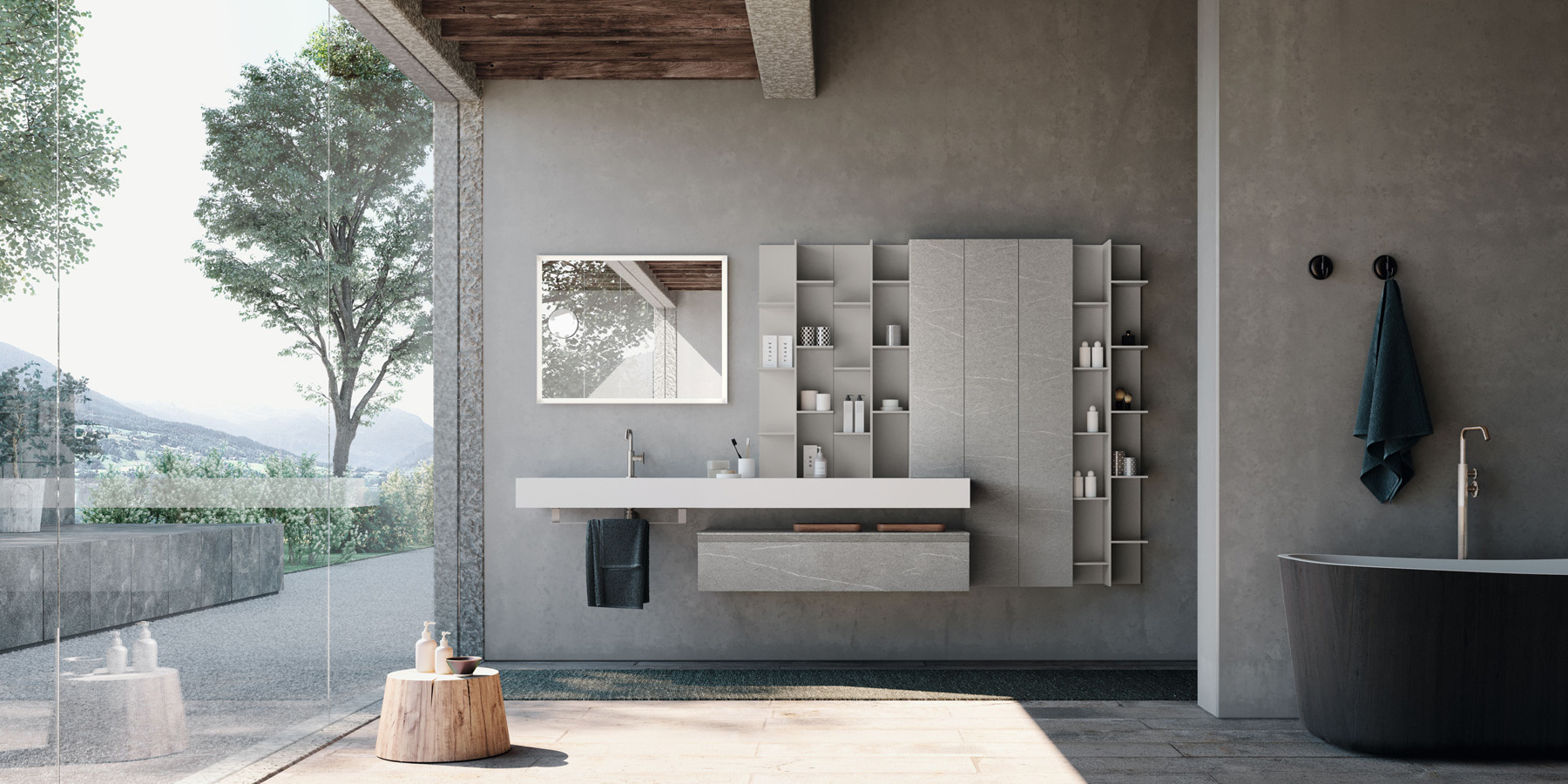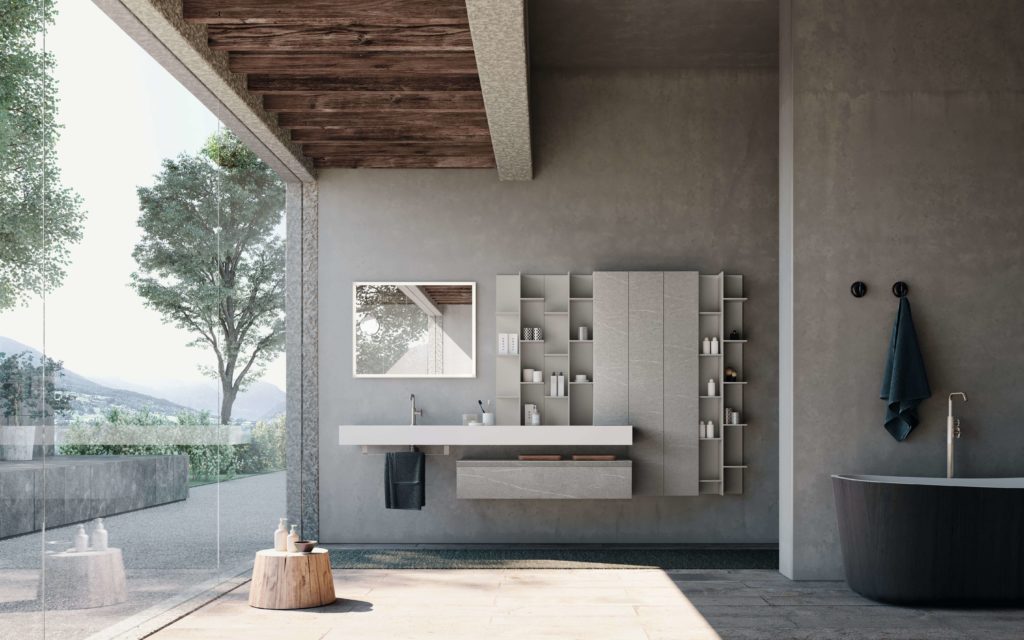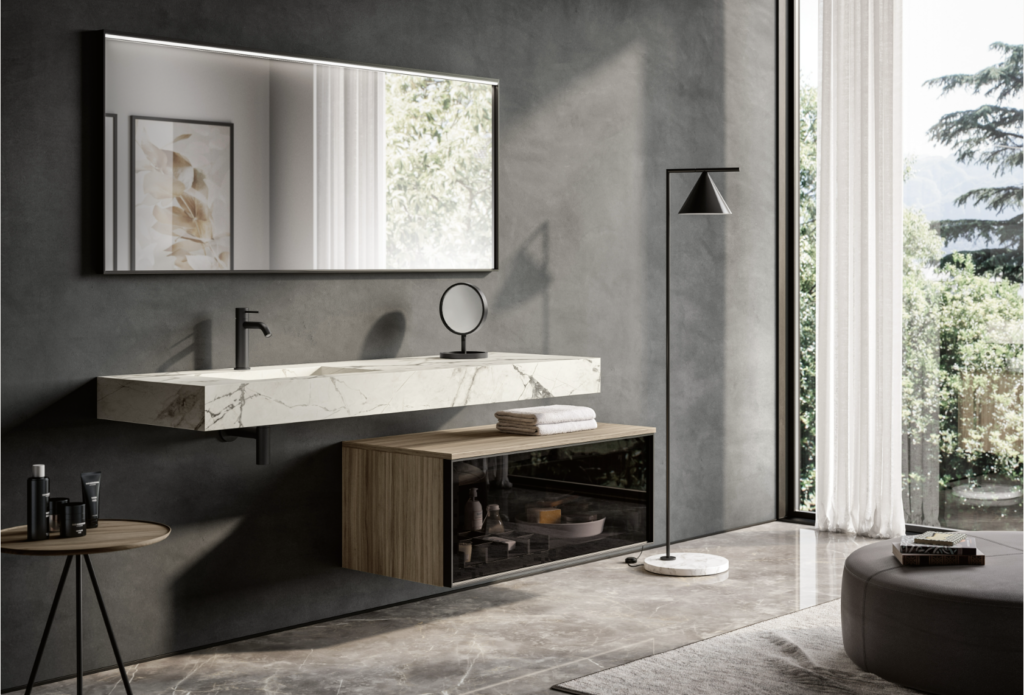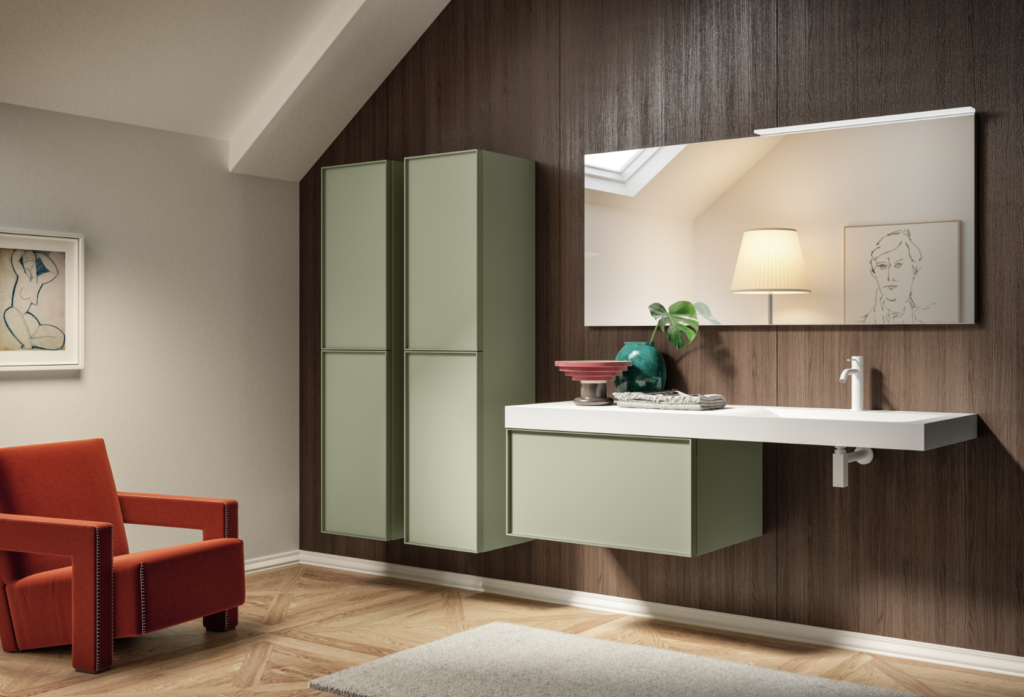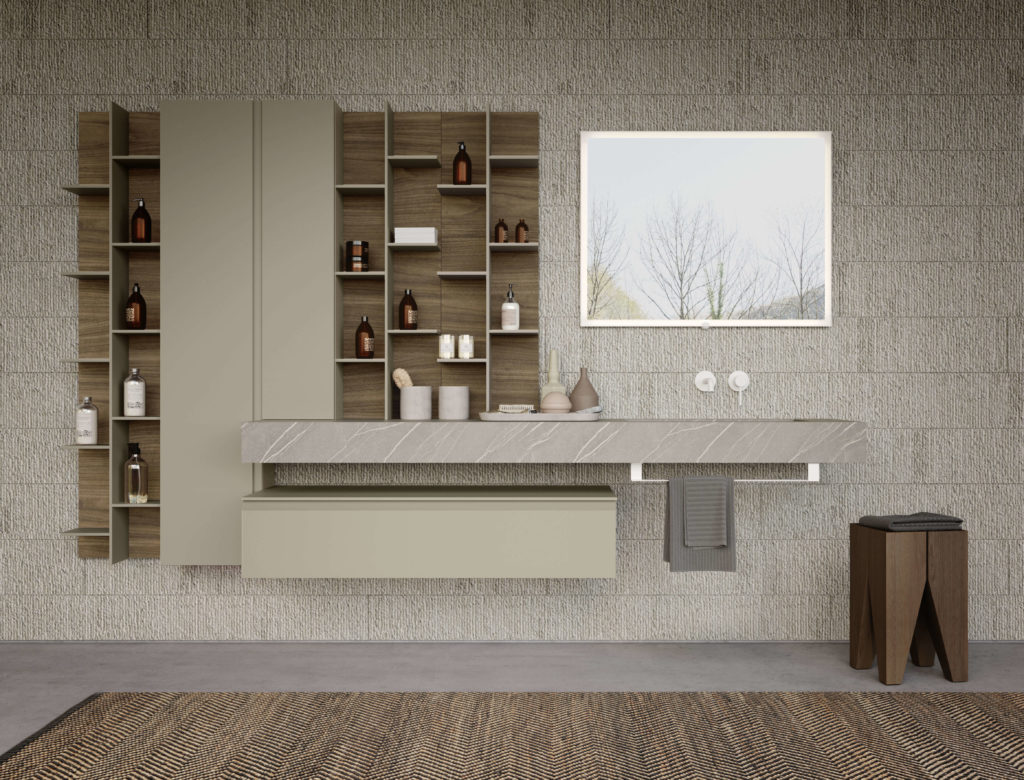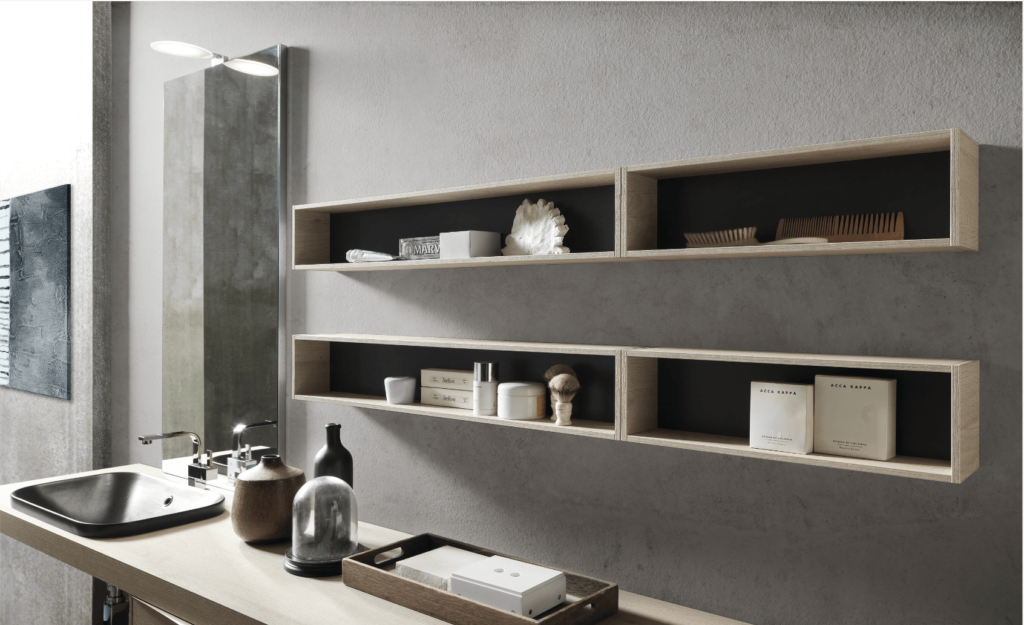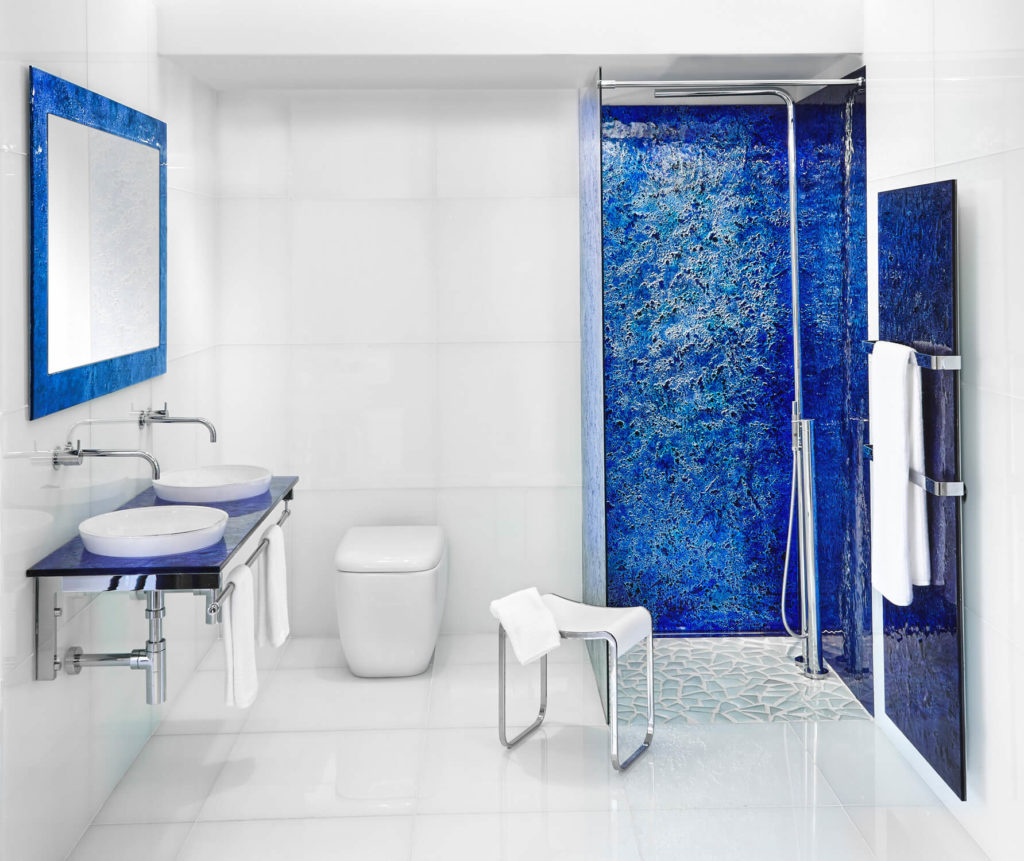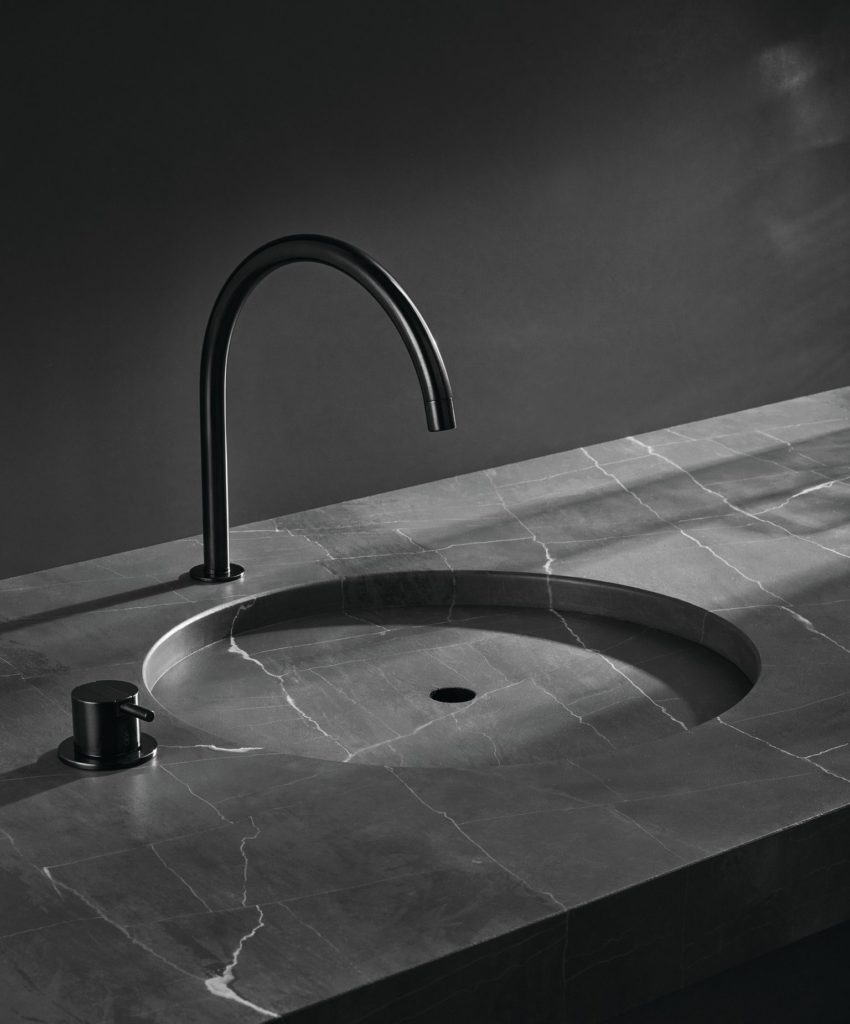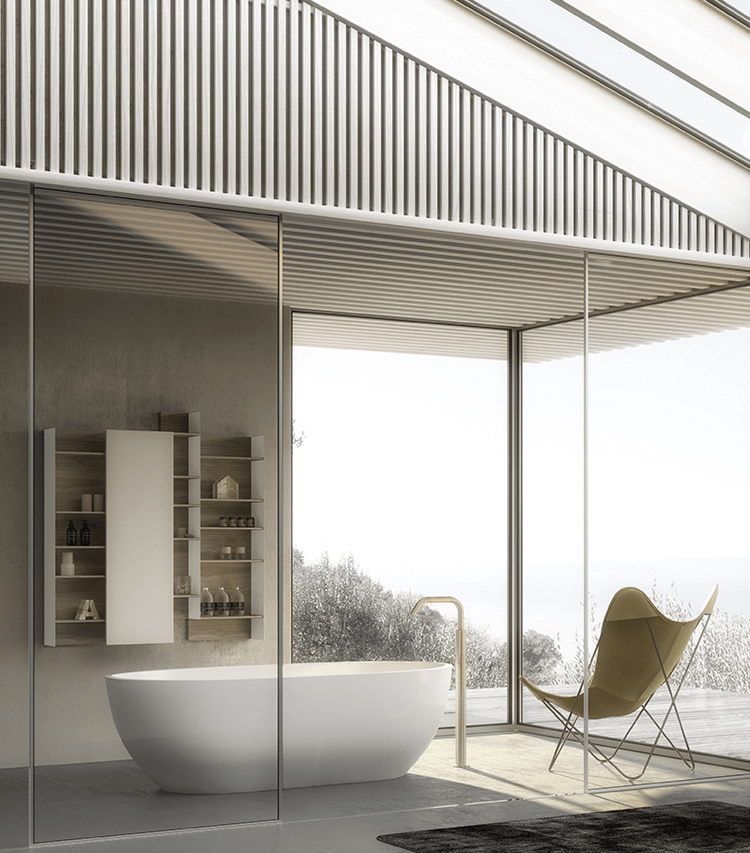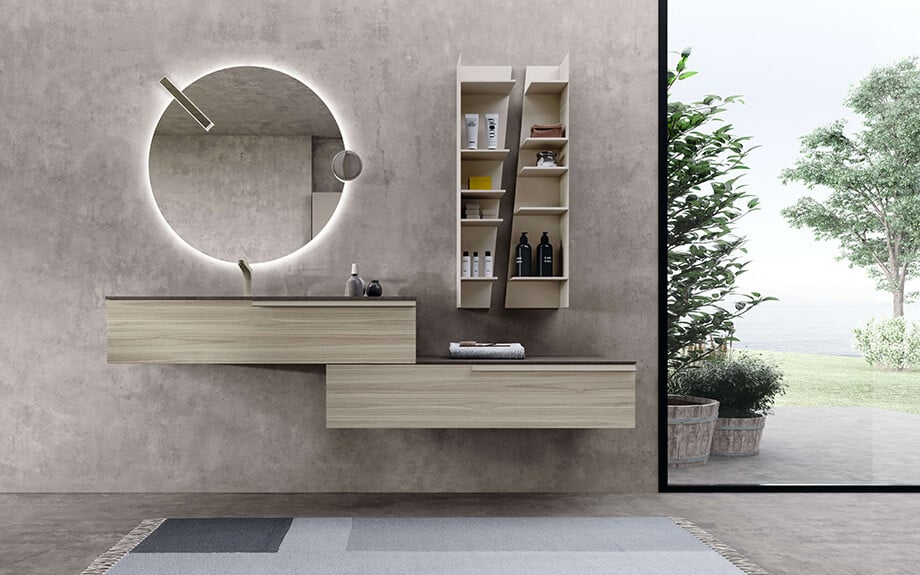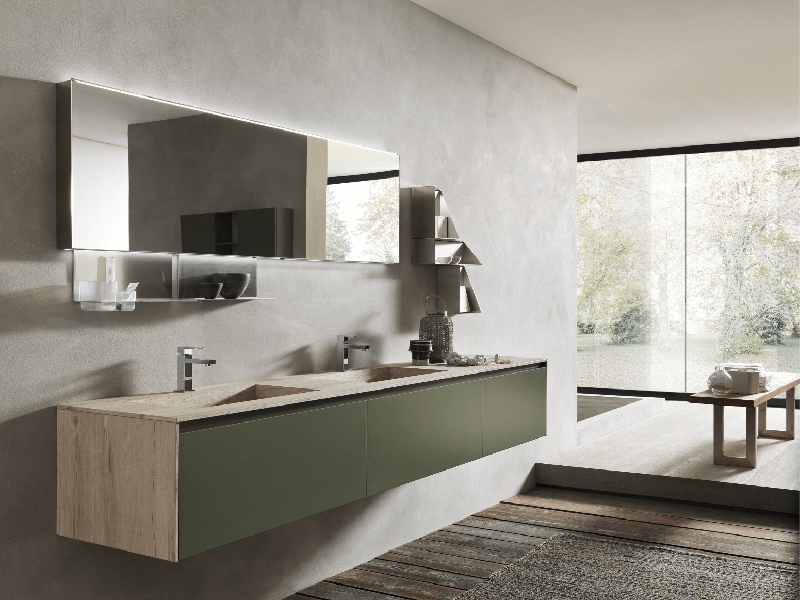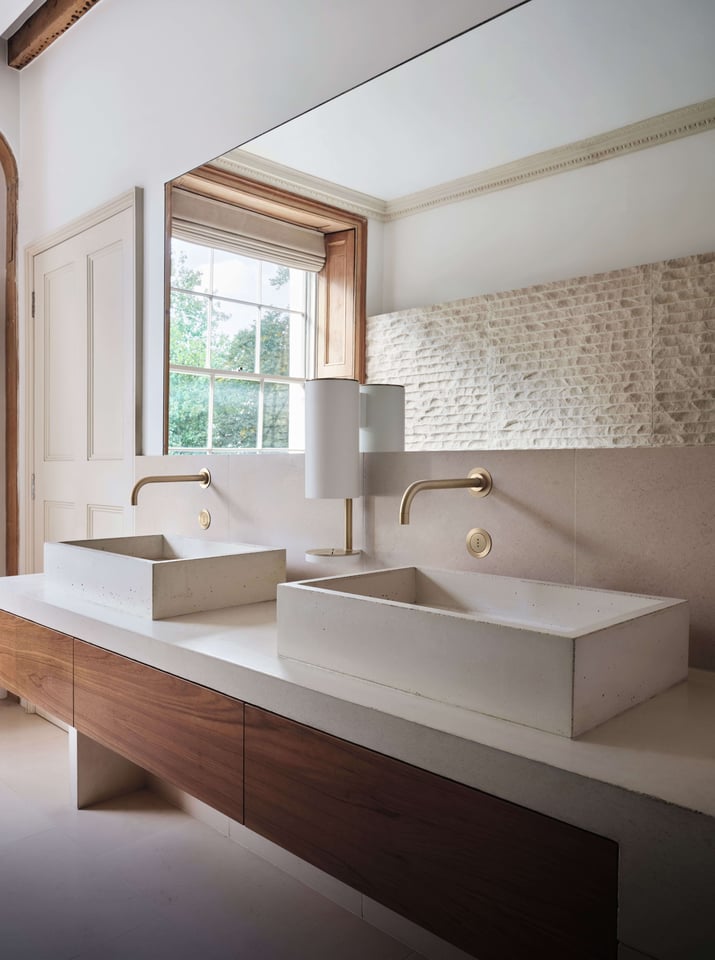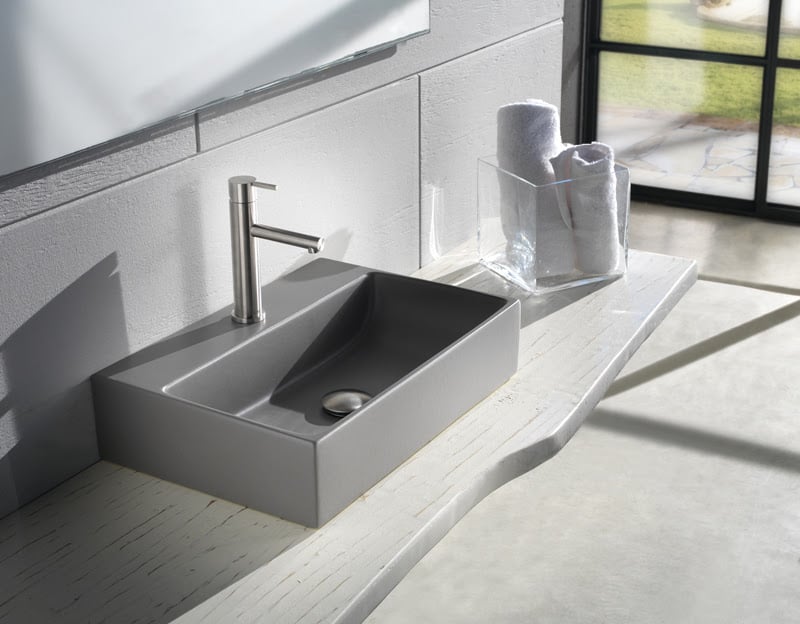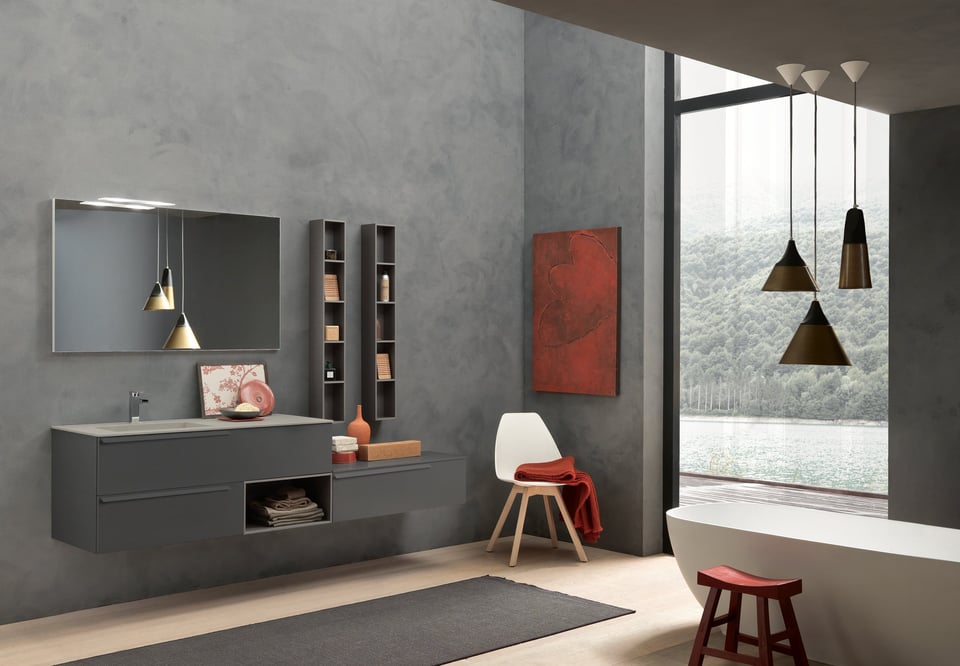If you’re building a forever home or renovating an existing one to accommodate aging in place, the bathroom is a crucial space to get right. Americans with Disabilities Act (ADA) compliance will guide the design, but there’s no guideline that says you have to use clunky, unattractive products with a clinical feel. If you’re designing a luxury bathroom for aging in place but don’t want it to be obvious, rethink “functional” by leveraging versatile solutions that cater to your lifestyle needs.
Design Tips for Aging in Place
If you’re starting from a blank slate, you have total freedom to design a luxury bathroom that will be suitable for your entire lifetime. Follow these tips to design for aging in place.
Look ahead with the layout
Think not only about how you use the space now, but also about how your needs might change in the future. ADA standards recommend:
- Entry door: This must be at least 42 inches wide, with a threshold no higher than half an inch.
- Toilet: The surrounding space should be at least 60 inches wide, with the center of the toilet 16-18 inches away from the side wall and a minimum height of 17 inches, not including the seat.
- Clearance space: Design for at least 60 inches of turnaround space.
- Sink: Install the sink 34 inches above the floor with clearance below.
- Faucets: Specify lever handles for ease of use.
Design the shower with safety in mind
An adjustable showerhead with a handheld body sprayer and sliding shower bar can accommodate users at any height, whether they’re seated or standing. A seamless entrance into the shower and curbless drain will reduce tripping hazards and make it easier for people to get in and out, even from a wheelchair. A built-in seat that can be easily accessed from the shower entry will provide a sturdy and stable perch.
Make smart material selections
Choose nonslip surfaces when you’re designing a bathroom for accessibility. Most bathroom materials meet this requirement, but some are better than others. For example, choose floor tile that has some texture with a honed or matte surface, rather than a glossy marble that may be slippery.
Select stylish safety features
Install grab rails near the toilet and in the shower—or at least leave space and blocking behind the wall for future installation if you don’t need them yet. Avoid using area rugs because they can be tripping hazards. If you want an eye-catching floor, consider a patterned tile that creates the illusion of a rug without the potential for getting caught on shoes, canes, or wheelchairs.
Stylish Products for Aging in Place
One reason people often hesitate to design for aging in place is the perception that they will have to sacrifice their aesthetic vision, but modern luxury bathroom products allow you to deliver on both your style and your functional goals.
Vanities
Floating vanities from the Urban and Class collections can be installed at the appropriate height to make a modern statement and allow room for maneuvering with a wheelchair. Rethink the conventional vanity design and leverage design flexibility with offset countertops that provide mid-level storage to accommodate accessibility and individual-specific needs. The modular approach allows you to design lower drawers for those who need them, mid-level storage space for enhanced accessibility (with cubes, horizontal storage solutions, metal cubes, open shelving, and so on), and higher storage space for other family members. Porcelain, Solid-Surface, and Fenix countertops are beautiful and provide the nonslip surfaces that make life easier.
Sinks
Sink style, depth, and shape are another design opportunity that will allow you to age in place in style. Choose a shallower sink that you can install tighter to the wall to provide more space to turn around and move around your space. Stay away from vessel sinks that add height to the design, instead opt for integrated or built-in basin styles. Consider a sink with smooth, curved edges instead of a more angular one, which will make it easier to reach into the sink from lower heights.
Mirrors
Think about people who might be using mirrors from different heights and choose a lighted mirror that provides consistent illumination from any angle. Wire it to a wall switch to make it easy to turn on the light and defogger. Tilted mirrors are also an option to consider.
Storage solutions
Consider potential access challenges when you’re designing wall storage solutions for aging in place. Include open shelves at lower heights and modern solutions such as cubes for mid-level storage. Open side shelves are also a subtle and elegant way to provide easy access at lower heights. To allow for clearance, install cabinet doors that open from the top or bottom, rather than from the side, and consider storage solutions with a slimmer profile to keep the floor space open.
Showers
Many modern luxury bathrooms are designed with curbless wet rooms and no discernable entry to the shower. These can also include a tub, but make sure the shower is easy to access and has plenty of space. A wet room is also an opportunity to use stunning glass partitions that evoke “modern elegance” and not “ADA bathroom.”
Faucets and fixtures
Electronic faucets are a popular option for aging in place, and they offer a more hygienic experience. Look for hands-free faucets with sensors that can be adjusted to detect movement from farther away. Remember that you can install spouts and mixers anywhere along the sink to make them more accessible, so think about the future when putting the finishing touches on your vanity design.
The VOLA 500 series—particularly the 590 and 520 collections—is well suited for accessible design. Install a deck-mounted spout along one side of the sink, or choose a wall-mounted spout and install the mixer on the countertop, where it can be easily reached. The lever-style handle, available in medium or long options, allows for easy use even with limited mobility.
Accessories
The small details can make a major difference in how you experience a space, especially when you have mobility challenges. Install towel hooks instead of bars and position them lower for easy access. Electronic soap dispensers that don’t require pumping are a perfect pairing with your hands-free faucet. For the ultimate in luxury, install a wall-mounted towel warmer that you can easily reach as you exit the shower.
Innovative, Accessible Design with Hastings
When you come to Hastings, we craft customized solutions to help you tackle any design challenge. With our modular design collections, you get complete design flexibility to create the luxury bathroom you envision.
Talk to our design specialists for more details on building a luxury bathroom that allows you to age in place.
Looking for more inspiration? Subscribe to our blog.
